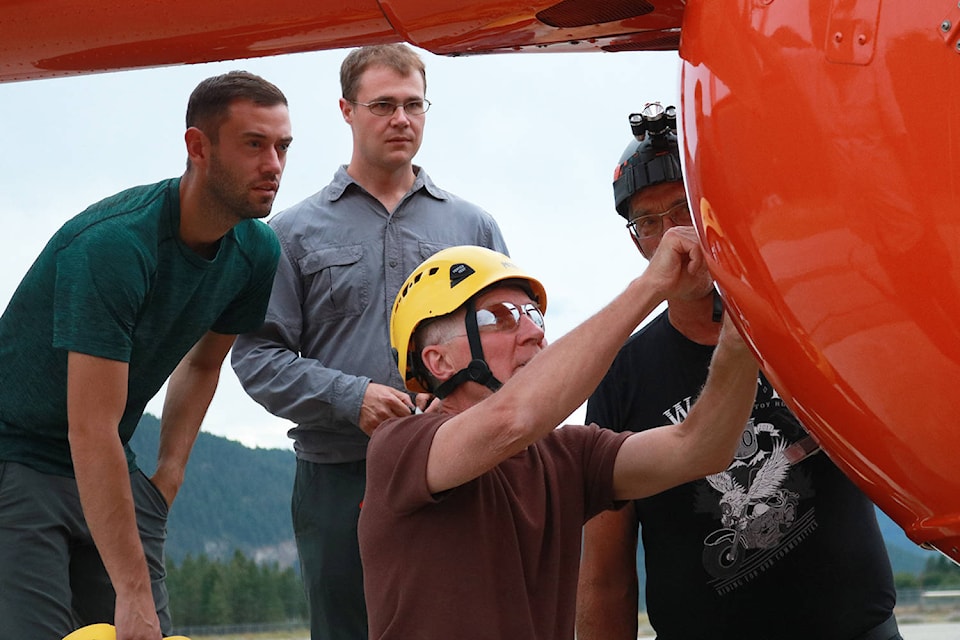Just a few weeks ago, Grand Forks Search and Rescue volunteers were called out to support a body recovery effort in Castlegar. Before that, they supported a search for a missing elderly woman from Rock Creek. In January, they travelled northwest to Merritt to scour the countryside for a cowboy who had gone missing — all searchers found was a riderless horse on a logging road.
Nevertheless, the team of volunteers dedicate time and their own money to train for avalanche rescues, helicopter evacuations, flat ice rescues and other dangerous manoeuvres so that people who get lost or go missing can have a safety net. But now, despite having a bigger team than ever, Grand Forks Search and Rescue is still looking for a central hall.
“It’s the biggest thing we’re lacking right now,” said Grand Forks Search and Rescue president Grant Burnard.
Right now, the team’s equipment is being stored at various members’ homes: an ATV here, a trailer there, and all of that dispersement means that response times are slower and that equipment may not be stored in the most ideal conditions.
“Centralization would be key,” said Burnard, who has been involved with local search and rescue for five years. Though Grand Forks Search and Rescue received provincial funding in the spring, Burnard said it goes so far as “sustaining the current team.” Beyond that, they are looking to fundraise and apply to further grants to get a dedicated hall built where they can train and store their gear.
Over his search and rescue career, Burnard has seen the Grand Forks team’s size more than double — from 14 to 38 over the past three years — and has taken advantage of training opportunities.
Now, with a well-staffed field crew, Burnard is putting the call out for support staff too.
“People think that [search and rescue] is just about the outdoors and you have to be fit,” Burnard said. What it really entails though, he explained, is a lot of logistics: keeping track of paperwork, monitoring equipment maintenance and making sure everything is set and in place when volunteers get the call.
